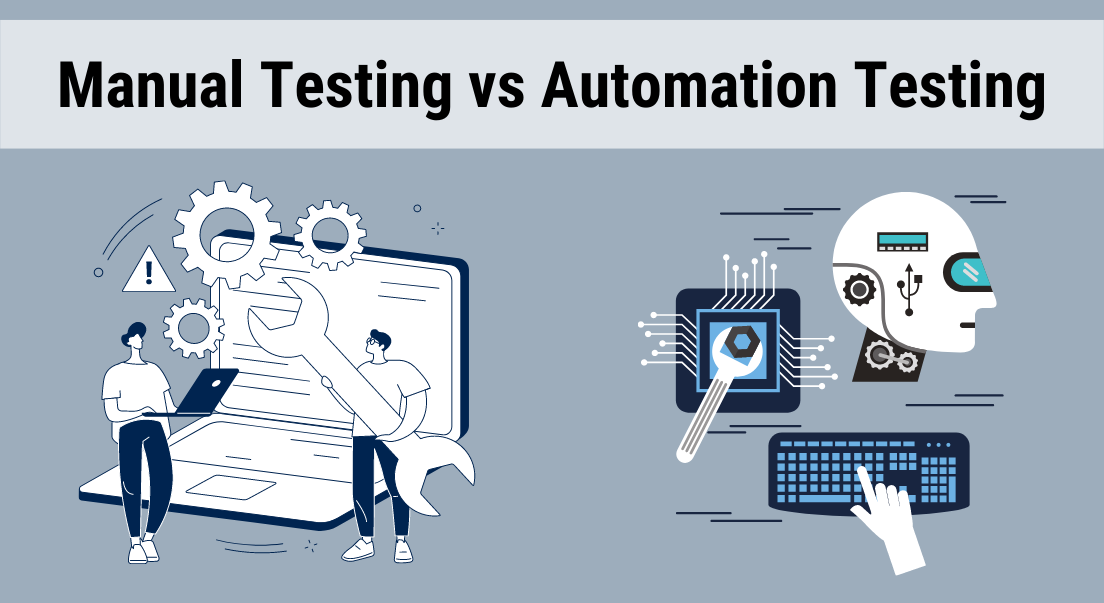The Relevance of Automation Testing in Agile Growth Settings
The Relevance of Automation Testing in Agile Growth Settings
Blog Article
From Manual to Automated Testing: A Comprehensive Overview to Transitioning Efficiently and Efficiently
In the realm of software application screening, the shift from manual to automated procedures has become a significantly essential transition for organizations seeking to enhance performance and precision in their testing practices. The journey from handbook to automated screening is not without its difficulties, yet when approached tactically and with a clear strategy in mind, the benefits can be considerable.
Advantages of Automated Evaluating
Automated screening offers various advantages, improving performance and precision in software development processes. Automated tests can be run at the same time on several tools and running systems, significantly speeding up the screening stage compared to hand-operated screening.
Additionally, automated screening makes sure a higher level of accuracy in discovering problems. Because automated tests follow predefined scripts, human mistake is decreased, bring about even more trustworthy examination results. Consistency in testing is additionally boosted, as automated tests perform the same actions exactly each time they are run. This consistency is essential in ensuring that all capabilities of the software program are completely evaluated, reducing the chance of unnoticed insects slipping via to manufacturing.
Picking the Right Tools

To start with, analyze your needs and purposes. Recognize the range of your project, the technologies entailed, and the ability of your team. This evaluation will certainly assist you identify the features and capacities you require in your screening tools.
Secondly, take into consideration the compatibility of the tools with your existing systems and processes. Seamless integration with your existing software program advancement lifecycle is important to ensure a smooth change to automation.
Additionally, evaluate the scalability and adaptability of the tools. As your screening needs evolve, the devices ought to be able to adjust and fit changes effectively.
Last but not least, element in the support and area around the tools. When implementing automated screening, robust assistance and an active customer community can give important sources and support. By carefully taking into consideration these elements, you can pick the right tools that straighten with your requirements and set the phase for an effective transition to automated testing.
Creating Effective Test Manuscripts

When crafting examination scripts, it is necessary to consider the details requirements of the software application being tested and make sure that the manuscripts deal with all essential performances. Descriptive and clear naming conventions for examination scripts and test instances can enhance readability and maintainability. Furthermore, including error handling systems within the examination manuscripts can help in determining and addressing concerns quickly.
In addition, arranging test scripts right into modular parts can improve reusability and scalability, decreasing redundancy and boosting efficiency in test script upkeep. Normal reviews and updates to check manuscripts are essential to maintain rate with developing software application needs and functionalities. By complying with these concepts, testers can create durable and reliable examination scripts that contribute dramatically to the success of automated testing processes.
Integrating Automation Into Workflows
Effective integration of automation tools right into existing operations improves and enhances procedures performance within software program growth cycles. When learn the facts here now incorporating automation into workflows, it is essential to determine repeated tasks that can be automated to save time and minimize human mistake. By effortlessly incorporating automated screening devices like Selenium or Appium right into the software program growth lifecycle, groups can accomplish faster comments on code changes, leading to quicker bug discovery and resolution. This combination enables for constant testing throughout the development procedure, making certain that any kind of problems are determined early, resulting in greater software program high quality. Furthermore, automation can be used to useful link cause examinations immediately after each code commit, giving instant validation and releasing up testers to focus on more facility scenarios. Correct combination of automation tools requires cooperation between growth, screening, and operations groups to develop a unified workflow that maximizes effectiveness and effectiveness in supplying high-quality software items.
Making Certain a Smooth Transition
Effectively transitioning to automated screening involves thorough preparation and careful implementation to minimize disruptions and maximize efficiency in the software program development process - automation testing. To make certain a smooth shift, it is necessary to start by carrying out a comprehensive evaluation of the existing screening processes and recognizing locations where automation can bring the most substantial advantages. Engaging with all stakeholders at an early stage at the same time, consisting of designers, testers, and task supervisors, is vital for amassing assistance and buy-in for the automation campaign
Communication is key throughout this transition stage. Clear interaction of the objectives, benefits, and expectations of automated testing assists to handle any resistance or issues that may arise. In addition, giving appropriate training and sources for staff member to upskill in automation devices and strategies is essential for making certain an effective shift.

Verdict
In verdict, transitioning from manual to automated testing provides many advantages, consisting of raised efficiency and reliability. By choosing the ideal tools, writing effective examination manuscripts, and incorporating automation flawlessly into workflows, organizations can ensure a smooth and successful shift. It is vital to welcome automation as a valuable asset in software program testing processes to boost total top quality and performance.
In the world of software program testing, the shift from manual to automated procedures has actually come to be an increasingly vital transition for organizations seeking to boost efficiency and accuracy in their internet screening techniques. Automated examinations can be run all at once on several gadgets and operating systems, considerably speeding up the testing phase compared to manual screening. Consistency in testing is additionally improved, as automated tests implement the exact same steps precisely each time they are run.To make certain the effective application of selected testing devices, the development of reliable examination scripts plays a critical duty in confirming the functionality and efficiency of automated processes - automation testing. By adhering to these principles, testers can create effective and robust examination scripts that add considerably to the success of automated screening processes
Report this page